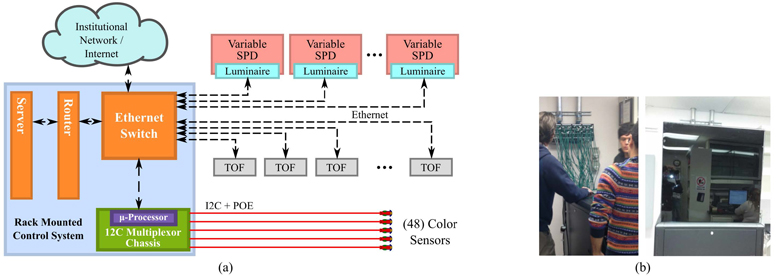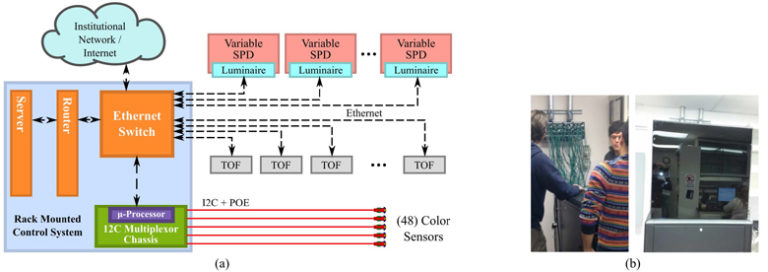
Objective: Lighting is a strong synchronizer for circadian rhythms, which in turn drives a wide range of biological functions. The objective of our work is a) to construct a clinical in-patient testbed with smartİ lighting, and b) evaluate its feasibility for use in future clinical studies. Methods: A feedback capable, variable spectrum lighting system was installed at the University of New Mexico Hospital. The system consists of variable spectrum lighting troffers, color sensors, occupancy sensors, and computing and communication infrastructure. We conducted a pilot study to demonstrate proof of principle, that 1) this new technology is capable of providing continuous lighting and sensing in an active clinical environment, 2) subject recruitment and retention is feasible for round-the-clock, multi-day studies, and 3) current techniques for circadian regulation can be deployed in this unique testbed. Unlike light box studies, only troffer-based lighting was used, and both lighting intensity and spectral content were varied. Results: The hardware and software functioned seamlessly to gather biometric data and provide the desired lighting. Salivary samples that measure dim-light melatonin onset showed phase advancement for all three subjects. Conclusion: We executed a five-day circadian rhythm study that varied intensity, spectrum, and timing of lighting as proof-of-concept or future clinical studies with troffer-based, variable spectrum lighting. Clinical Impact: The ability to perform circadian rhythm experiments in more realistic environments that do not overly constrain the subject is important for translating lighting research into practice, as well as for further research on the health impacts of lighting.

